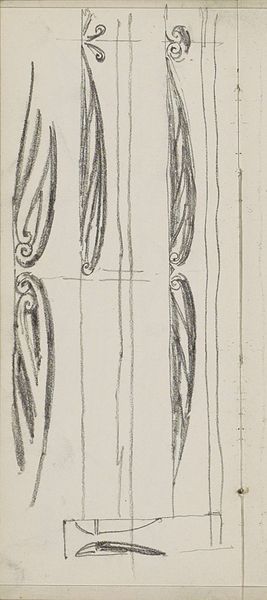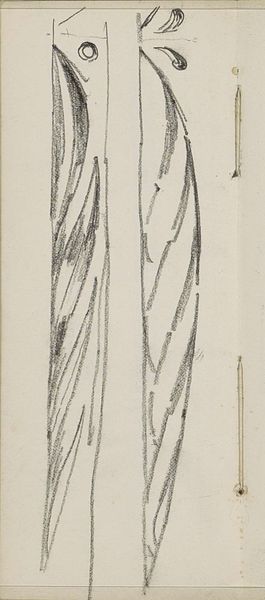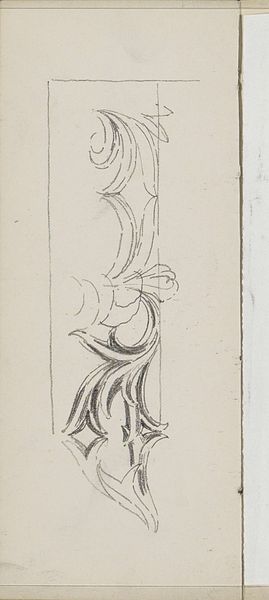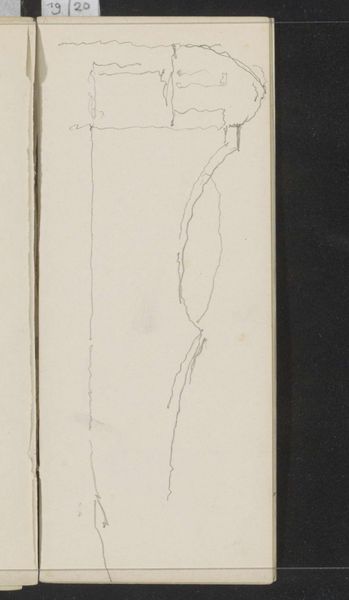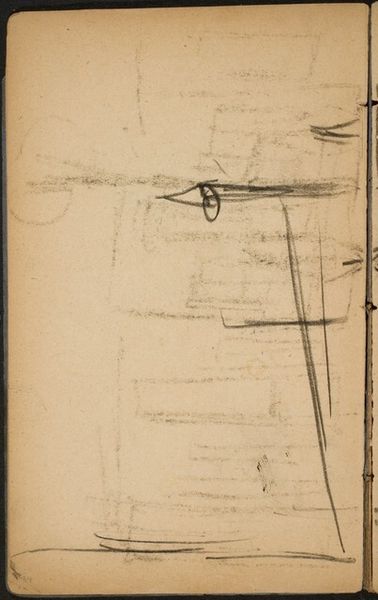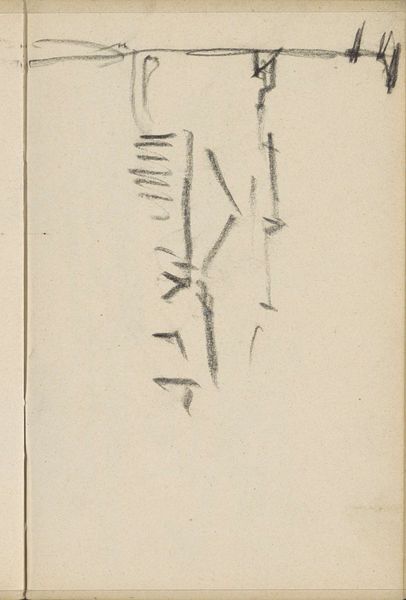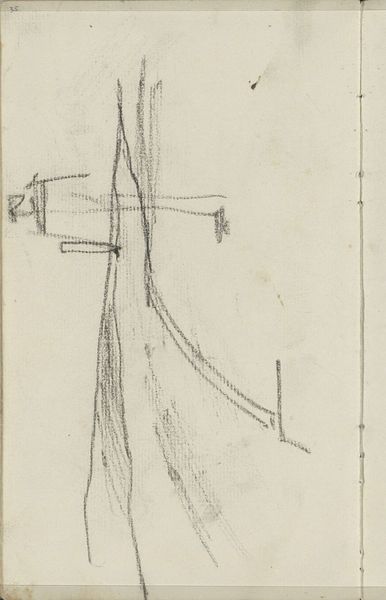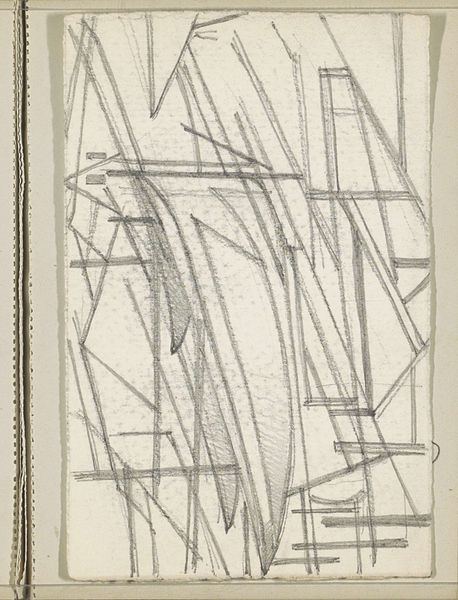
drawing, pencil
#
drawing
#
art-nouveau
#
form
#
geometric
#
pencil
#
line
#
sketchbook drawing
#
decorative-art
Copyright: Rijks Museum: Open Domain
Curator: Here we have "Ornamenten met rolwerk," a pencil drawing dating from around 1876-1924, by Gerrit Willem Dijsselhof, currently held in the Rijksmuseum collection. Editor: Immediately striking is its lightness and its sense of unfolding—a delicate balance in what appears to be a preparatory sketch. Curator: Indeed. Observe how Dijsselhof employs line, form and repetition in this design. The geometric and curvilinear elements harmonize to create a visual rhythm. Editor: The material simplicity also fascinates me. It is 'just' pencil on paper. I imagine the hand of the artist constantly at work, turning abstract notions of pattern and form into the immediate, tactile presence of the drawing. Was this likely a study for a larger, perhaps applied arts project? Curator: Very likely. Given the Art Nouveau aesthetic, it is plausible this was a design study for furniture or interior decoration, pointing to Dijsselhof's interest in integrating art with everyday life, and dissolving distinctions between fine art and craft traditions. Editor: What strikes me is the raw physicality of creation – seeing the artist's hand, understanding this piece as labour… pencil tracing and re-tracing its route along the paper surface. You see, the context changes everything, it invites to ponder the role of sketches, in decorative design. Curator: An intriguing perspective. It reminds us of the value in preliminary exploration. It allows us to appreciate the fundamental components of this work's visual structure—line, shape, and balance, and explore the piece in a new context, and see a more in depth analysis on what it proposes. Editor: Well, for me, that connection back to a material base amplifies its impact. And this glimpse behind-the-scenes feels refreshing and grounding. Curator: Precisely. Seeing through the lens of the creator offers new insight into the creative and laborious process.
Comments
No comments
Be the first to comment and join the conversation on the ultimate creative platform.
